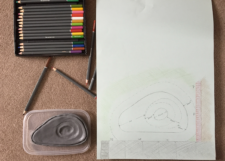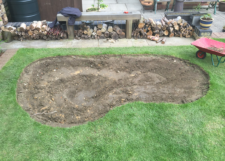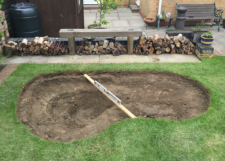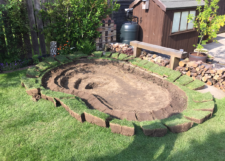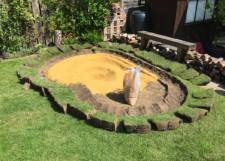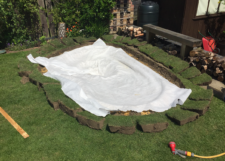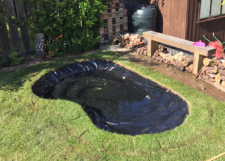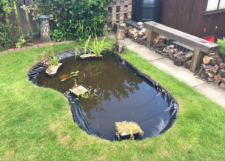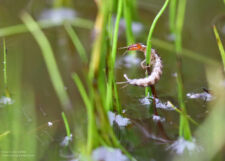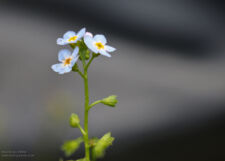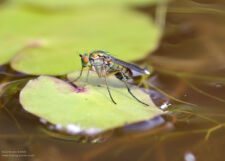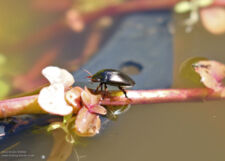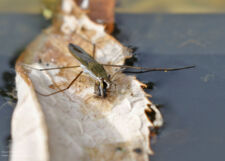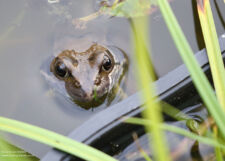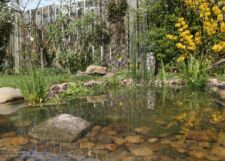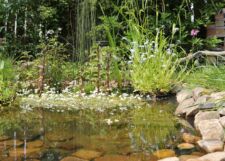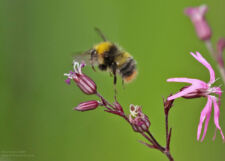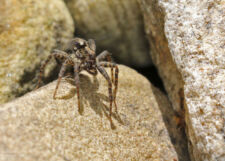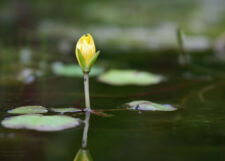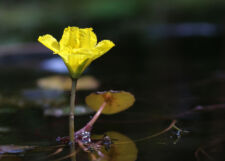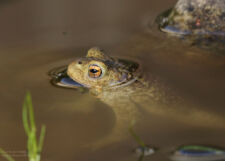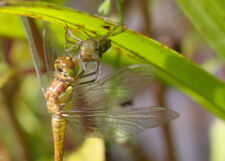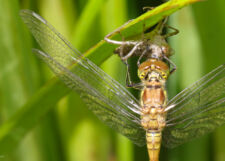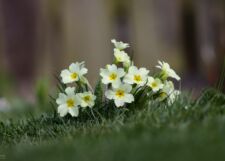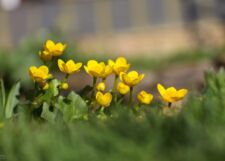Wildlife Pond
This page has been created to record the creation, experiences and sightings relating to our wildlife pond in our Etherley Moor garden, Bishop Auckland. For anyone considering a similar project, please read on:
The thought of creating a wildlife pond in our garden had been something we had been wanting to do for a number of years and we eventually decided to go ahead with the project on 1st May 2016. Considerations included the location, the shape & size of the pond, how the water was going to be collected and oxygenated.
Knowing there are a number of chemicals in tap water, we decided to make sure the pond got off to the best possible start by using only rain water to fill the pond. To allow us to fill the pond to at least half of its capacity we purchased a water container and some pipework from the local store, which allowed us to collect rain water from the roof of our shed.
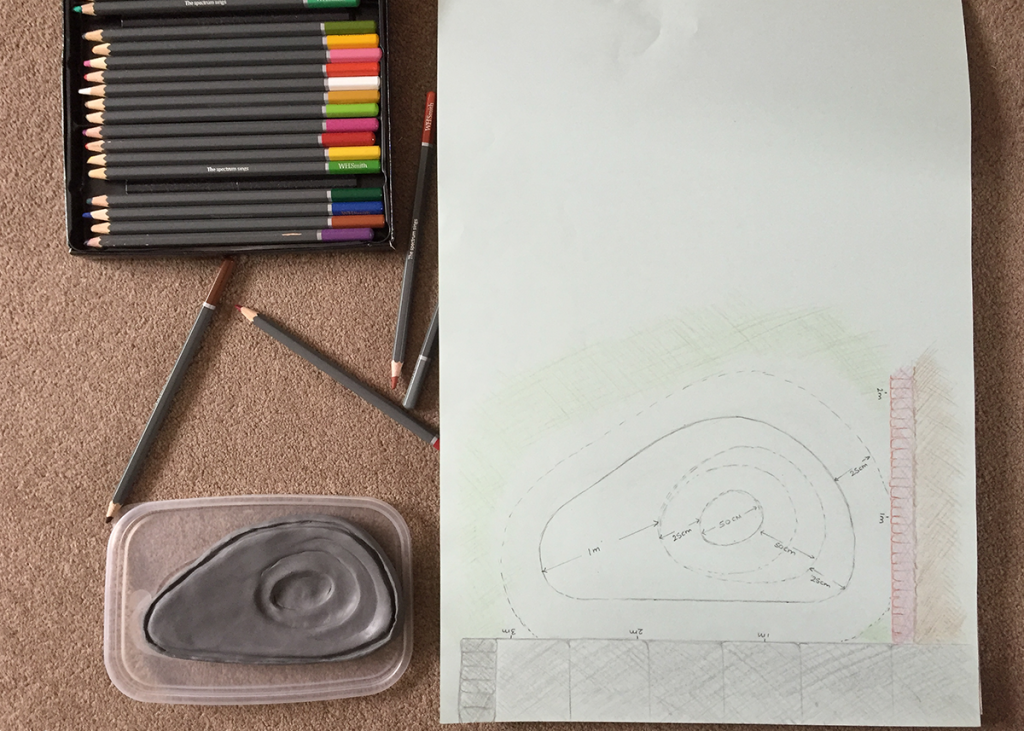
Whilst waiting for the water container to fill we chose a suitable location, where we could watch the wildlife comfortably from the garden bench. It was also to be level and have plenty of sunlight throughout the day.
We then used some modelling clay and drawing materials to plan the shape, length, width and depth of the pond. It was to have three depths and a sloping area to allow wildlife to escape the pond should they accidentally fall in. We also decided to create a recess around the whole of the pond to provide a damp area for plants and moss to grow.
The next few weeks were spent looking for and purchasing the materials from the local building merchants and garden centres, which included building sand, polyester lining & black uPVC lining.
As soon as we thought there was enough water to at least fill half of the pond, we used a length of rope to carefully lay out the shape and position of the pond. Once the position and shape had been laid out, we began to removed the turf to a depth of approximately 3-4 inches, which presented us with a problem we hadn't foreseen. On removal of the turf we discovered a number of roots, which would increase the risk of the lining being punctured. As we continued to remove the soil for the remaining levels, extra care was taken to cut back all the roots as far as possible and remove any sharp objects.
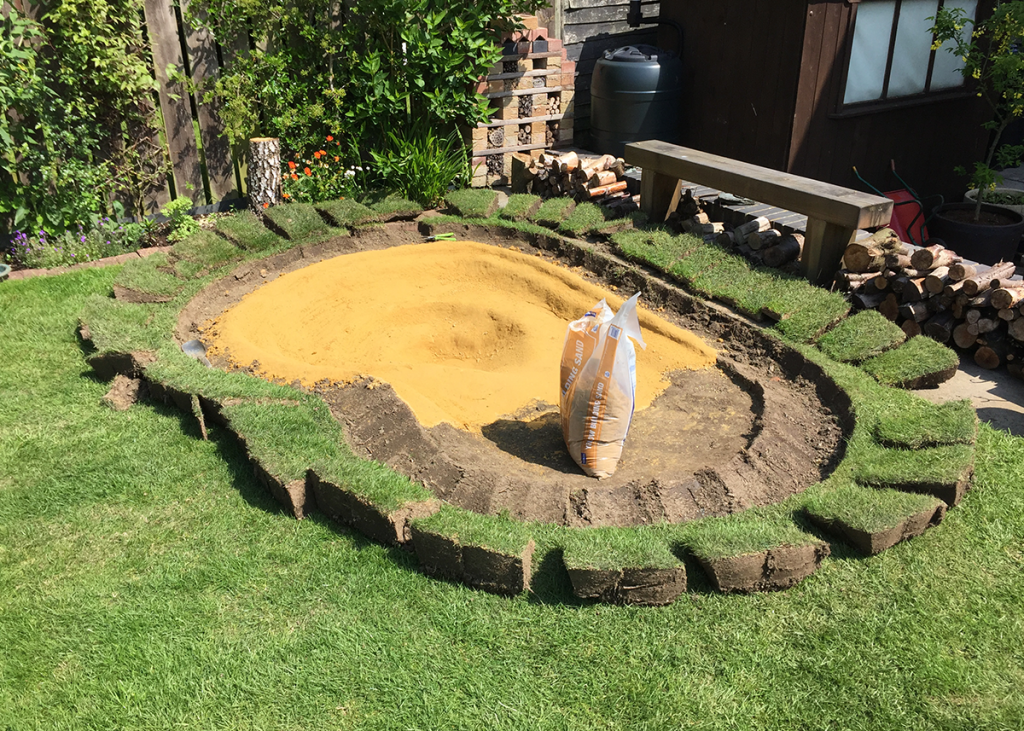
Once we were confident of there being no sharp objects or roots, we made sure the soil was nice and firm before adding the sand to a depth of approximately 1cm. The sand was then covered with a layer of polyester lining and a layer of uPVC liner, making sure they covered the whole of the excavated area. The main purpose of the sand was to help protect the two layers of lining from puncture and help insulate the water during the winter months.
As soon as we were happy with the work done so far, we began to add the rainwater we had collected over the previous weeks. As we were adding the first few buckets of water, two water beetles dropped into the pond and we began to realise how much enjoyment the pond was going to bring to us over the coming years.
Over the next few weeks we started to add a selection of carefully chosen plants to help oxygenate the water in a natural way. The plants we chose were all British native and included yellow flag iris, water forget-me-not, water mint, cotton grass, water crowfoot and sedge. The plants were added to over the following 5-6 months and the pond eventually became clear and self-oxygenating. We also added a good selection of different sized stones and strategically placed items of branches to help attract wildlife.
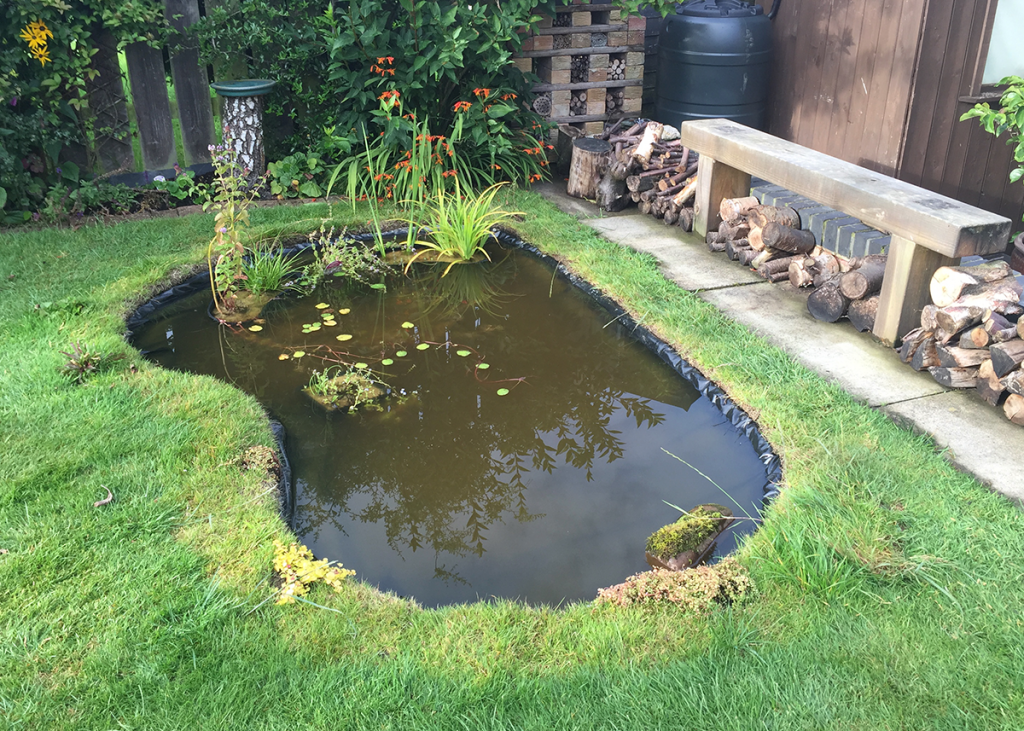
Keeping the water level at a suitable depth over the years has been a problem every summer. To help combat this we installed a second down pipe to store water in an wheely bin we no longer used. Even this was not enough during the long dry summer of 2018 and we were forced to start using tarps & buckets to collect as much rain water as possible.
Wildlife of interest so far has included common newt (3+), common frog (3+), common toad (1), water beetle (10+), pond skater (2+), backswimmer (30+), water snail (1), hover flies (2+), unidentified fly (20+), Common Darter (2), etc. Birds continue to visit the water regularly for drinking/bathing, which has so far included Tree Sparrow, House Sparrow, Blackbird, Starling, Dunnock, Robin, Magpie and Woodpigeon.
Conclusion to this project would be to make sure it is planned correctly with all factors taken into consideration paying particular attention to location, size, depth, available rain water and how to dispose of the dirt being removed from the ground. If we were to do this again, we would probably excavate the first shelf to the depth of the plant baskets, which will help protect the lining from the sun and hide the baskets from view.
Gallery
Step by step guide using images and a some of the wildlife that have visited the pond since its creation:
All images displayed on these pages are copyright protected, so please ask for permission if you intend to use the images and information for anything other than personal use (a small fee or donation of bird food for the local feeders may apply if you are not a David Brown Website Design, Imaging & Photography customer or charitable organisation).
